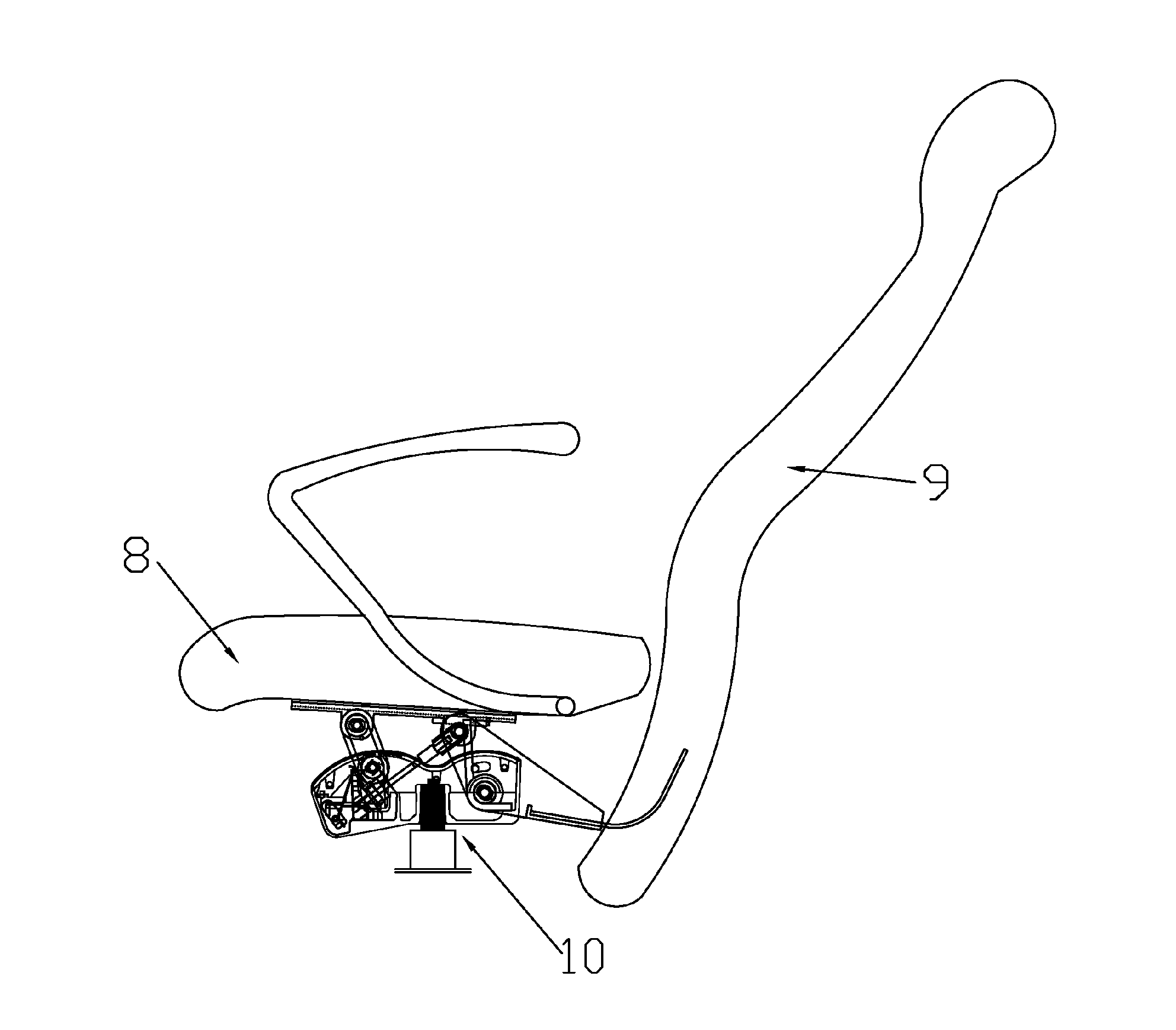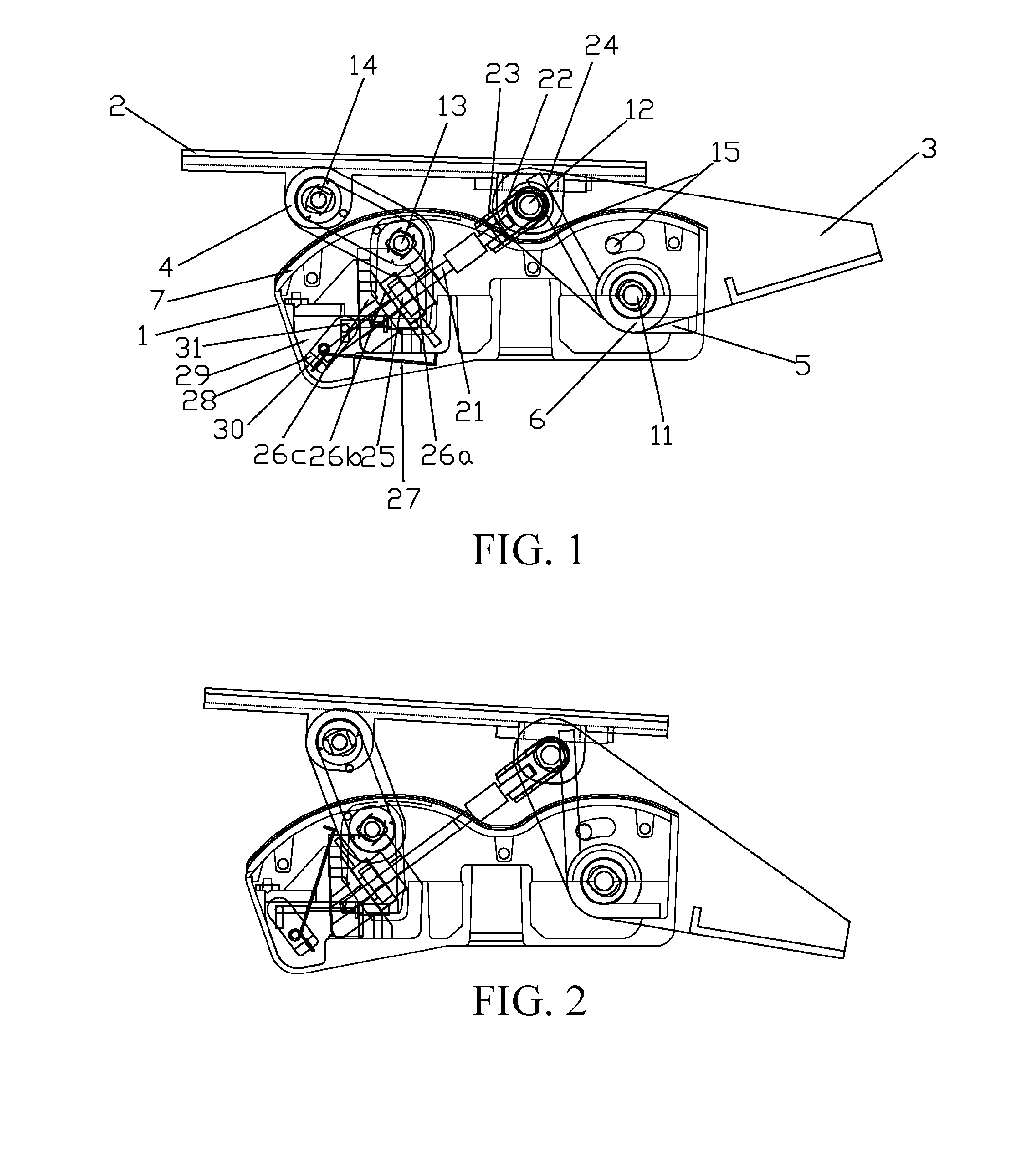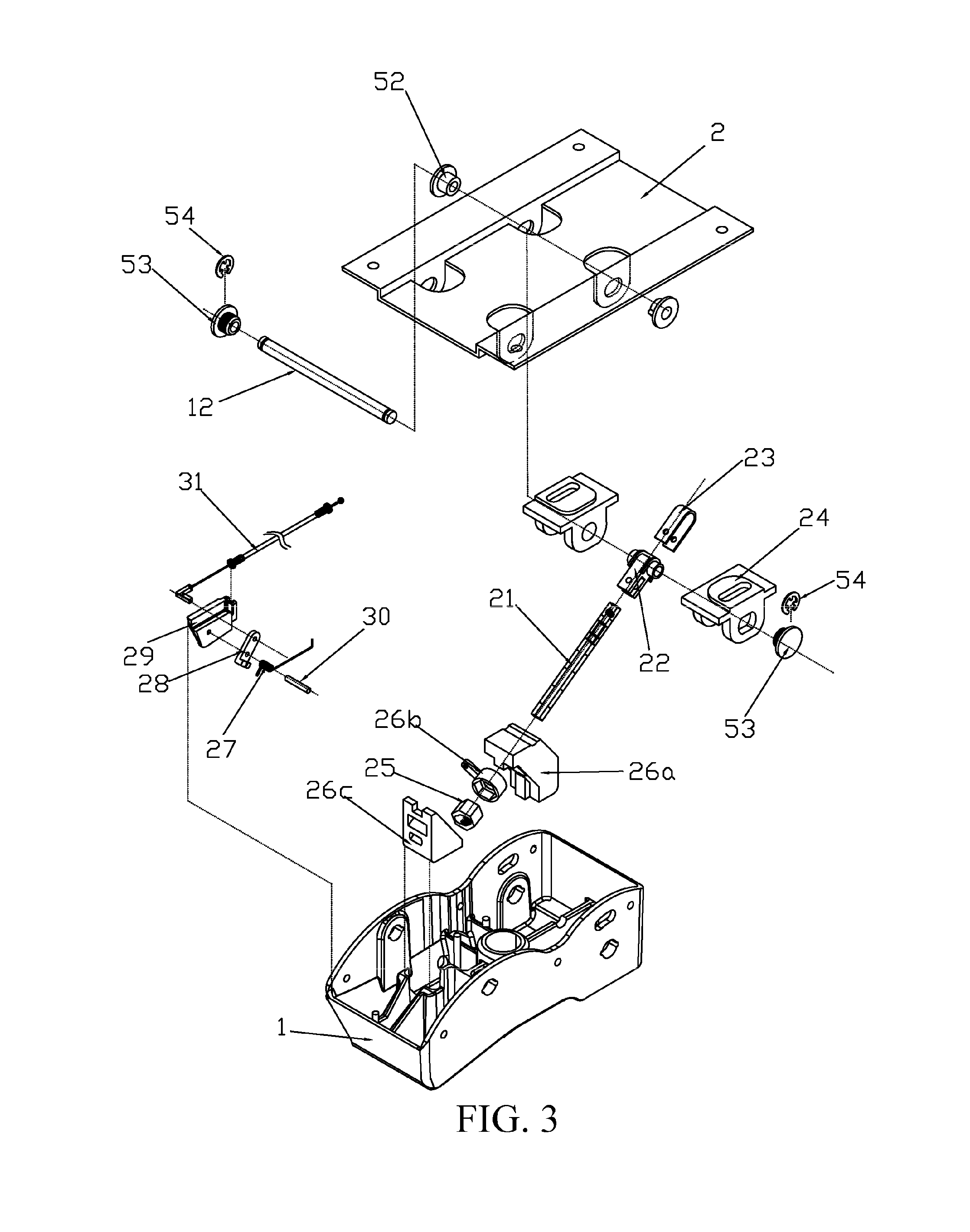Chair chassis and chair having the same
a chair chassis and chair technology, applied in the field of chair chassis and chair, can solve the problems of more parts being required for calibration purposes, difficulty in accurately adapting to the user's needs, and excessive light or excessively heavy pressure, so as to avoid or significantly reduce the friction of the backrest, reduce the leaning back, and reduce the rearward pressure
- Summary
- Abstract
- Description
- Claims
- Application Information
AI Technical Summary
Benefits of technology
Problems solved by technology
Method used
Image
Examples
Embodiment Construction
[0050]Referring to FIG. 1 to FIG. 3, according to some embodiments, a chair chassis includes a main tray base 1, a seat bearing plate 2, a movable support member 3 and a pair of movable supporting plates 4, where the seat bearing plate 2 is disposed above the main tray base 1, for bearing a seat 8, a front end of the movable support member 3 is pivotally connected to the seat bearing plate 2 by using a common shaft 12, a lower end of the movable support member 3 is pivotally connected to the main tray base 1 by using a common shaft 11, a lower end of the movable support member 3 is used for connecting a chair backrest 9, the front end, the lower end and the rear end of the movable support member 3 are in a triangle relationship and the front end and the rear end are pivotable by taking the lower end as a fulcrum, the pair of movable supporting plates 4 are located in front of the movable support member 3, upper and lower ends of each movable supporting plate 4 are respectively pivot...
PUM
 Login to View More
Login to View More Abstract
Description
Claims
Application Information
 Login to View More
Login to View More - R&D
- Intellectual Property
- Life Sciences
- Materials
- Tech Scout
- Unparalleled Data Quality
- Higher Quality Content
- 60% Fewer Hallucinations
Browse by: Latest US Patents, China's latest patents, Technical Efficacy Thesaurus, Application Domain, Technology Topic, Popular Technical Reports.
© 2025 PatSnap. All rights reserved.Legal|Privacy policy|Modern Slavery Act Transparency Statement|Sitemap|About US| Contact US: help@patsnap.com



